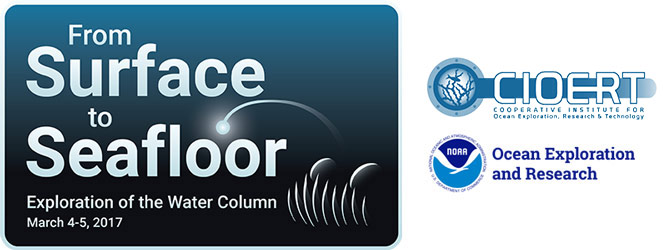Participants
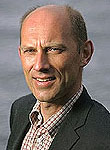
Dag L. Aksnes, University of Bergen
Dag L Aksnes is professor in biological oceanography at the University of Bergen, Norway. His research has developed from zooplankton population dynamics and marine ecosystem modelling to a current interest in mechanistic modelling of biological processes and how these respond to environmental changes. In recent years this interest has led to a number studies exploring hypotheses on how changes in light regime and optical properties affect mesopelagic ecosystem structure of coastal and oceanic systems.
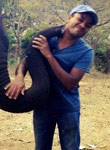
Dr. Ruhul Amin received his B.E. degree in computer engineering and the M.E. degree in electrical engineering from the City College of New York, New York, NY, USA, in 2005 and 2008, respectively, and the M.Phil. and Ph.D. degrees in electrical engineering from the City University of New York, NY, USA, in 2008 and 2009, respectively. He has extensive experience in satellite algorithm development, and optical instrumentation and measurements. He has developed and validated new multispectral and hyperspectral ocean color algorithms, and has been involved with numerous interdisciplinary remote sensing programs funded by the NAVY and NASA. Dr. Amin's current research interests include optical algorithm development and automation, atmospheric corrections, cloud-shadows, fluorescence, identification of clouds and sea-ice, uncertainty analyses, optical detection and classification of harmful algal bloom, coastal hypoxia, and development of emerging capabilities linking observational data (space-borne, air-borne, ground-based).

Edward T. Baker, University of Washington and NOAA/Pacific Marine Environmental Lab
Dr. Baker’s research interests over the past 30 years have centered on two primary issues: the creation and thermal evolution of vent fields created by seafloor eruptions and the global pattern of vent field distribution along ridges and island arcs. This work is part of NOAA’s Earth-Ocean Interactions Program. Data comes primarily from measurements of physical (hydrography and optical) and chemical (oxidation-reduction potential to detect reduced chemical species) tracers that can be used to track hydrothermal discharge through the water column and thus deduce processes happening on the seafloor. To address the first issue, Dr. Baker has monitored the changes in hydrothermal heat output over several years following the creation or rejuvenation of vent fields following seafloor eruptions. To address the second issue, he depends on exploration cruises primarily funded by NOAA, NSF, or foreign colleagues. For the last decade work has been focused along volcanic arcs and the adjacent backarcs in the western Pacific (Kermadec-Tonga and Mariana subduction zones). Presently, Dr. Baker is working on the connection between diffuse venting and the recently discovered ocean-basin-scale plumes of hydrothermal Fe (and other species) from ridges in the south Pacific.
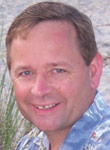
Chris Beaverson, NOAA Ocean Exploration and Research
Chris Beaverson currently serves as a senior consultant for marine sciences at MAXIMUS Federal and is working under a contract with the Ocean Exploration and Research Program (OER) at NOAA within the Office of Oceanic and Atmospheric Research (OAR). OAR serves as NOAA's primary research component, conducting oceanographic, atmospheric, meteorological, and environmental research. Chris supports advanced technology initiatives within the Ocean Exploration and Research Program. Chris has diverse experience working throughout NOAA serving in operational research, executive leadership and program management positions as a commissioned officer for over 25 years. He has over eight years of sea service on NOAA ships and served two tours as Commanding Officer: on the ocean research vessel Ka'imimoana and the fisheries research vessel Townsend Cromwell. He was a NOAA working diver for over 17 years. Chris has technical expertise in acoustic remote sensing and geological and physical oceanography. Chris completed graduate work in marine geophysics at the University of Miami and holds a masters degree in Public Administration from the University of Washington.

Barbara Block, Stanford University
Dr. Barbara A. Block holds the Prothro Professorship at Stanford University. Her research is focused on how large pelagic fish utilize the open ocean. She and her team have pioneered the successful development and deployment of electronic tags on tunas, billfishes and sharks. Dr. Block is Co-founder with the Monterey Bay Aquarium of the Tuna Research and Conservation Center the only facility in North America holding tunas for research. The lab studies bluefin and yellowfin tunas from a whole organism to genome perspective with interests in physiology of migrations, thermogenesis, cardiac biology, energetics and reproduction. The combination of lab and field research has led to a rapid increase in the understanding of movement patterns, population structure, physiology, ecology and behaviors of pelagic fish and sharks. Dr. Block was a co-Chief Scientist for the Tagging of Pacific Predators program (TOPP), organized under the Census of Marine Life. This international program, the largest electronic tagging program on the globe, succeeded in placing 4800 tags on 23 predators in the California Current to better understand how pelagic animals use the North Pacific ecosystem. Block earned her B.A. at the University of Vermont, and began her oceanographic career at Woods Hole Oceanographic Institution in 1979 working with Dr. Francis G. Carey. She earned her Ph.D. in 1986 at Duke University. Block was an assistant professor at University of Chicago (1989-1993). She joined the Stanford faculty in 1994. Block has received a MacArthur Fellowship, a Pew Marine Fellowship, the Rolex Award for Enterprise and the Benchley Award in Ocean Science.
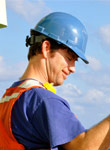
John "Chip" Breier, University of Texas Rio Grande Valley
Chip Breier is an Associate Professor of Marine Science at the University of Texas Rio Grande Valley. He is a broadly trained marine chemist and ocean engineer. He uses remotely operated and autonomous vehicles, along with custom sampling instrumentation and sensors, to study biogeochemical and ecological processes within and across the boundaries of the ocean’s internal redox and particle anomalies. His studies include hydrothermal vent plume chemistry and microbiology, cold seep natural gas transport, and fine scale biogeochemical zonation within the upper ocean. He received his mechanical engineering degree from Texas A&M University, was an officer in the U.S. Navy, received his Ph.D. from the University of Texas, and worked for nine years in the Deep Submergence Laboratory of the Applied Ocean Physics & Engineering Department at Woods Hole Oceanographic Institution. He currently leads the NSF-funded Clio project, to develop a rapid vertical profiling autonomous underwater vehicle with biogeochemical sampling capabilities that is designed to facilitate a community driven global marine mapping survey of microbial DNA, RNA and biomolecules. More information is available on his research website ![]() .
.
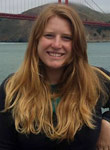
Kasey Cantwell, NOAA Ocean Exploration and Research
Kasey Cantwell is a Field Operations Specialist with NOAA's Office of Ocean Exploration and Research (OER). Kasey has a Master of Science degree in Marine Affairs & Policy and Marine Geology & Gepophysics, and a Bachelor of Science degree in Marine Science and Biology, both from the University of Miami Rosenstiel School of Marine and Atmospheric Science. Kasey is responsible for coordinating telepresence-enabled expeditions conducted onboard NOAA Ship Okeanos Explorer. Since joining OER in 2012, she has coordinated a over a dozen expeditions and projects, including multidisciplinary expeditions to the Atlantic submarine canyons, the Marianas, Pacific Remote Island Marine National Monument, and Glacier Bay National Park. Beyond deep sea exploration, Kasey’s background includes imagery based mapping of coral reefs throughout the Caribbean, long-term ecosystem monitoring, and evaluating resource management strategies to improve efficiency and data quality.
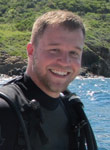
Collin Closek, Stanford University
Collin is an Early Career Science Fellow at Stanford University's Center for Ocean Solutions and a Postdoctoral Scholar in the Department of Civil and Environmental Engineering. His work uses molecular biological approaches to assesses biodiversity and marine diseases. Collin is working with the Marine Biodiversity Observation Network (MBON), a BOEM, NASA, and NOAA-funded project, to improve methods for assessing biodiversity and health of marine environments. Along with the University of South Florida and the Monterey Bay Aquarium Research Institute (MBARI), we are optimizing molecular tools with environmental DNA (eDNA) to measure micro- and macro-organismal diversity in the Florida Keys, Flower Garden Banks, and Monterey Bay National Marine Sanctuaries.
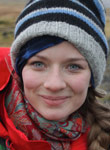
Anni Djurhuus, University of South Florida
Dr. Anni Djurhuus is a postdoctoral researcher at the University of South Florida. She did her PhD at the University of Oxford in the Ocean Research and Conservation group led by Professor Alex D. Rogers. For her PhD thesis she worked on marine microbiology of deep-sea hydrothermal vents and seamounts in the Southern and Indian Oceans. The main focus of her work is on microbial biogeography on local and regional scales. Dr. Djurhuus is currently employed on the Marine Biodiversity Observation Network (MBON) project, investigating microbial communities of the Florida Keys and Monterey Bay national marine sanctuaries. Work for the MBON project includes environmental DNA (eDNA) ground-truthing methods, biogeography of organisms from microbes to whales using eDNA techniques, and ecosystem health and management.
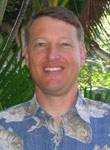
Jeffrey Drazen, University of Hawaii
Jeffrey Drazen is a professor in the department of Oceanography at University of Hawaii, Manoa. He is an ecologist interested in studying the trophic ecology and energetics of deep-sea fishes and the structure and function of deep-sea food webs in both the pelagic and benthic realms. He earned his PhD from Scripps Institution of Oceanography and he was a postdoctoral fellow at the Monterey Bay Aquarium Research Institute before joining UH Manoa. Currently he is working on projects exploring how islands affect pelagic community structure, the structure of deep-sea food webs using stable isotope techniques, evaluating abyssal fish and scavenger populations in areas that will be mined for metal resources, and working on the structure and function of trench communities. He has authored and coauthored ~75 scientific articles and book chapters and he has been on 56 research cruises, often as chief scientist, sampling with nets, traps, baited cameras, ROVs and submersibles.

Michael Ford, NOAA Fisheries
Michael Ford is an oceanographer at NOAA Fisheries and a Research Associate at the Smithsonian Environmental Research Center. He believes in NOAA’s ability to bring together multiple scientific disciplines across many space scales. He currently serves as a biological oceanographer in the Ecosystem Science Division at NOAA where he directs the fisheries oceanography research program called Fisheries and the Environment (FATE). Mike served as Oceanographer and Senior Science Advisor to the National Marine Fisheries Service (NMFS) Chief Scientist where he built and managed the Comparative Analysis of Marine Ecosystem Organization (CAMEO) Program, an oceanographic and fisheries science research grant program following GLOBEC and supported by a NSF / NMFS partnership. He provided advice to the NMFS Chief Scientist and promoted science across multiple disciplines. Mike maintains active research projects focused on swimming and feeding of jellyfish, the relationship between jellyfish and fish populations, and plankton ecology. His publications consider the biology and physics of individual organisms as well as population interactions at the shelf and basin scale. Mike finds new species of jellyfish and characterizes the most unexplored biome on Earth with Deep Discoverer II, NOAA’s 6000m endurance deep ocean ROV. Mike advances the understanding of jellyfish and their ecological role from bay to continental shelf and from tributary to deep ocean trench.
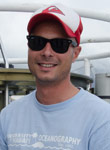
Giacomo Giorli, University of Hawaii
Dr. Giacomo Giorli is a postdoctoral Researcher at the Hawaii Institute of Marine Biology. He was granted a B.Sc. degree in Natural Science and a M.Sc. degree in Conservation and Management of Natural Resources at the University of Florence, Italy, and, with the support on a Fulbright Scholarship, Giacomo earned his Ph.D in Oceanography at University of Hawaii at Manoa. His research is focused on deep diving marine mammals foraging. He uses underwater passive acoustics to monitor the foraging activity of deep diving toothed whales, and active acoustics imaging techniques to investigate whales' prey distributions in deep sea scattering layers. He is also applying imaging sonar technology to the study of bottom fish populations.
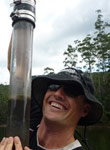
Alistair Grinham, The University of Queensland
Dr. Grinham’s research interests lie in developing ways of persistently monitoring the environment in an attempt to improve spatial coverage and capture irregular events such as terrestrial flood events, freshwater methane bubbling and submarine volcano activity. Autonomous, low cost sensing systems appear to offer the best path to persistent monitoring and developing these has been his lab’s primary focus area.
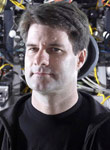
Steven Haddock, Monterey Bay Aquarium Research Institute
Steve Haddock studies marine diversity, molecular biology, and bioluminescence at the Monterey Bay Aquarium Research Institute and UC Santa Cruz. He specializes in fragile gelatinous jellyfish-like creatures that are abundant in the water-column deep-sea and open ocean. In addition to conducting research expeditions around the world, he uses genetic methods to reveal the relationships between organisms and to understand the proteins that they use to make light. He also runs the Bioluminescence Web Page ![]() , the citizen-science project jellywatch.org, and has a textbook for teaching computing to scientists at practicalcomputing.org.
, the citizen-science project jellywatch.org, and has a textbook for teaching computing to scientists at practicalcomputing.org.

Christopher Hayes, University of Southern Mississippi
Chris is a chemical and paleo- oceanographer. He received his PhD from Columbia University at the Lamont-Doherty Earth Observatory and he did research as a post-doctoral fellow at the Massachusetts Institute of Technology for a little over 2 years. While there, he participated in expeditions to the Station ALOHA time-series station, cored for African dust in the Bahamas, and sailed on a UNOLS Chief Scientist Training cruise between Barbados and Bermuda. In 2016, he began a faculty position in the School of Ocean Science and Technology at the University of Southern Mississippi, based at the Stennis Space Center. Here he has a lab measuring long-lived radioisotopes and is pursuing projects in the GEOTRACES program and carbon cycling in the Gulf of Mexico.
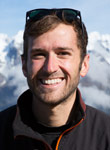
Brad Henning, National Geographic
Brad Henning received his Bachelor of Science in Electrical Engineering from South Dakota State University in 2012. He joined the National Geographic Remote Imaging engineering team after graduating, where he now designs electrical hardware and software systems that the group uses to produce custom imaging equipment. His work has led him around the world on scientific expeditions and photographic assignments with scientists, explorers, photographers, and filmmakers.
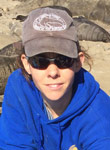
Rachel Holser, University of California Santa Cruz
Rachel Holser is a Ph.D. student at UC Santa Cruz studying the habitat use and behavior of northern elephant seals. She has a BS in Biology and MS in Oceanography and is very interested in the intersection between these fields. Her lab has been deploying satellite tracking instruments on elephant seals since 2004, including CTD tags that collect high resolution temperature and salinity data throughout the North Pacific, from the surface to 1000+m of depth. Part of Rachel’s dissertation work includes using these data to characterize the Blob and evaluating the impact that this warm anomaly had on the behavior of elephant seals, who typically utilize areas that were affected.
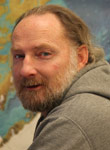
Russ Hopcroft, University of Alaska
Dr. Russ Hopcroft is a Professor at the University of Alaska's Institute of Marine Science in Fairbanks. Dr. Hopcroft received his Masters degree in 1988 and his Ph.D. in 1997 from the University of Guelph, Ontario, Canada studying plankton ecology in tropical waters. From 1997 to 1999, Dr. Hopcroft was a Post-doctoral Fellow at the Monterey Bay Aquarium Research Institute (MBARI). At MBARI, he was heavily involved in the use of ROVs, as well as traditional oceanographic surveys, to study the oceans. He joined the University of Alaska Fairbanks in 2000 and has since focused on Arctic and subarctic ecosystems, including 3 ROV expeditions into its central basins. He pursues a broad array of research interests, concentrating on the "lower" planktonic trophic levels that ultimately shape the structure of all marine communities. His research focuses on the composition, production, and energy flow of pelagic ecosystems and better methods to explore these topics. With over 100 scientific publications, he is a leading expert on Arctic and subarctic zooplankton biodiversity, with broad expertise across it full range of zooplankton groups. Although much of his research focuses on the abundant copepod crustaceans, he is also a specialist on the taxonomy, biology, and ecology of pelagic tunicate class Larvacea.
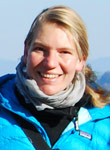
Cornelia Jaspers, Technical University of Denmark
Dr. Cornelia Jaspers is a biological oceanographer interested in understanding the contribution of different gelatinous zooplankton groups to secondary production and overall carbon cycling in tropical, temperate and Arctic ecosystems. Her primary focus is on the role of gelatinous zooplankton in food webs. They contain a suite of different organisms which share the trait of a soft body texture, which poses a major challenge, since they contain members which do not preserve in conventional preservatives or are extremely patchily distributed which makes it necessary to combine different sampling techniques to arrive at a quantitative community estimate. Dr. Jaspers has also been interested to understand population dynamics and physiological constrains on the range expansion of the invasive comb jelly Mnemiopsis leidyi in European waters. This included a combination of field investigations, in situ rate measurements and laboratory experiments as well as ocean current modelling and molecular analyses in order to understand metapopulation dynamics in invaded habitats.
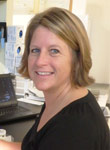
Heather Judkins, University of South Florida St. Petersburg
Dr. Heather Judkins is an assistant professor in the Department of Biology at the University of South Florida St. Petersburg. She received a Bachelors degree in Marine Affairs from the University of Rhode Island, Masters degree in Science Education from Nova Southeastern University and her PhD in Biological Oceanography from the University of South Florida. Her research focuses on understanding the evolution, ecology, and biogeography of cephalopods with a main focus currently in the midwater region of the Gulf of Mexico.
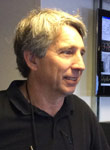
Christopher Kelley, University of Hawaii
Dr. Christopher Kelley is graduate faculty for the Oceanography Department at University of Hawaii and affiliate faculty at the Hawaii Institute of Marine Biology. He is serving as the science lead for the 3-year CAPSTONE project in the Pacific. He has been the program biologist for the Hawaii Undersea Research Laboratory (HURL) at the University of Hawaii for the last 15 years, responsible for identifying deep water fish and invertebrates recorded during submersible and ROV operations, and annotating video for inclusion in HURL’s deepwater animal database and online photo guide. Dr. Kelley has both led and worked on numerous external grants, such as reviewing Essential Fish Habitat (EFH) designations for the deep water bottomfish fishery, describing communities associated with manganese crusts in the Central Pacific and disposed munitions off Pearl Harbor, and extracting HURL video records for a national database of deep-sea corals. Dr. Kelley has led many multibeam and sidescan sonar mapping projects throughout the Hawaiian archipelago, such as mapping the Papahanaumokuakea Marine National Monument onboard the R/V Falkor. His sidescan sonar towfish surveys off Oahu have led to the discovery of a number of submerged cultural resources, the most significant of which was the Japanese midget sub sunk by the US destroyer Ward moments before the 1941 attack on Pearl Harbor. He has been contracted to create various types of GIS projects and recently completed the first multibeam backscatter synthesis of the entire seafloor surrounding the Main Hawaiian Islands. Dr. Kelley received his PhD in 1995 from the University of Hawaii while researching fish reproductive cycles. Prior to joining HURL, he traveled extensively, providing technical assistance for developing fish hatcheries in Indonesia, Taiwan, the Philippines, Egypt, and Cameroon, West Africa. He was also an aquanaut for the Hydrolab Undersea Habitat in 1982, assisting in a study on the ecology and social behavior of Caribbean angelfishes.

Astrid Leitner, University of Hawaii
Astrid Leitner is originally from Vienna, Austria, but grew up mostly in Berkeley, California. She has a B.S. in Earth and Planetary Sciences and a B.S. in Marine Biology both from the University of California, Santa Cruz. Astrid’s undergraduate research was mostly focused on subtidal and intertidal kelp forest ecology; however, through an NSF REU grant, she worked on ROV data from Astoria Canyon at the Hatfield Marine Science Center in Newport, Oregon. Since then, she has begun working on her PhD with Dr. Jeff Drazen at the University of Hawaii, Manoa focusing on seamounts, especially on their effects on benthic fish and scavenger communities. She is interested generally in how topography influences the spatial distribution, community composition, and diversity of deep sea communities, especially fishes. She is also interested in using advanced imaging technologies to collect nondestructive, ecological data in a replicable, quantitative way.
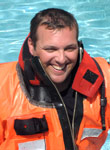
Alan Leonardi, NOAA Ocean Exploration and Research
Alan Leonardi is responsible for providing direction to NOAA and the U.S. Department of Commerce in the field of ocean exploration, research, and advanced technology development. A key element in the Office of Ocean Exploration and Research’s portfolio is the expeditionary exploration activities, which combine the NOAA Ship Okeanos Explorer and high-speed networks and infrastructure for live communications to scientists and other audiences ashore. A meteorologist and oceanographer, Leonardi has been with NOAA since 2003. Previous roles include Program Manager for NOAA’s Environmental Modeling Program; Deputy Director of Policy, Planning, and Evaluation within NOAA’s Office of Oceanic and Atmospheric Research; and Deputy Director of NOAA’s Atlantic Oceanographic and Meteorological Laboratory.
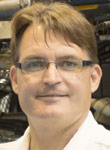
Dhugal Lindsay, Japan Agency for Marine-Earth Science and Technology
Research focuses on mid-water ecology, particularly concentrating on gelatinous organisms that are too fragile to be sampled by conventional methods, and their associated fauna. In particular, their taxonomy, community structure, biodiversity patterns & relationships to their environment. Development of technology and techniques to describe species & map distributions in space & time, currently focussed on being able to assess whether variability in biological systems to be targetted by deep-sea mining is natural or anthropogenically-forced. Project Leader of JAMSTEC’s PICASSO Project. Served on the National Academies of Science (U.S.), Ocean Studies Board, Committee on Future Needs in Deep Submergence Science, the Steering Committee of the Census of Marine Zooplankton (Census of Marine Life: CoML) and as head of the Deep Ocean Stewardship Initiative (DOSI) working group on “New Technologies.” Over 50 cruises on various Japanese research vessels, both as Chief Scientist and as a member of multidisciplinary teams. Cruises on Australian, U.S. and Spanish vessels. 21 dives in submersibles and >100 hours of ROV work.
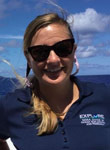
Elizabeth "Meme" Lobecker, NOAA Ocean Exploration and Research
Meme has been with OER as a Physical Scientist since 2009. Since joining the team, she has led 27 ocean exploration mapping expeditions aboard NOAA Ship Okeanos Explorer, and she is currently pursuing the application of telepresence technology to mapping cruises. Since starting her work with ERT and OER, she has mapped over 450,000 sq km of seafloor and trained dozens of future explorers. Shoreside, Meme works at the Integrated Ocean and Coastal Mapping (IOCM) center at UNH, she facilitates data archival procedures with the National Geophysical Data Center, and collaborates with other scientists on Okeanos Explorer exploration missions.

Toby Martin, University of Hawaii
Toby is a tech geek that has been throwing computers at the ocean since 1988 when he designed and built satellite tracking tags for whales, dolphins, and turtles at Oregon State University. In the late 1990s he broadened his scope as a ship based Marine Technician of Oregon State. Over the decades as a Martech, from the equator to the Arctic, he became intimate with:
- ship-resident, remote, lowered, and towed instrumentation;
- ship-shore-instrument communications and networks via 802.11, cellular (analog, digital, and broadband) satellite channels;
- and data acquisition systems.
In 2015, Toby began focusing on ship-mounted ADCPs with the University of Hawaii as the face of UHDAS to the NOAA fleet. He has many sea-years on research vessels in the UNOLS, Coast Guard, and NOAA fleets.
Toby's mottoes are:
- life is uncertain, eat dessert first;
- he makes science happen.
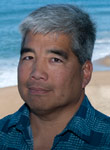
George Matsumoto, Monterey Bay Aquarium Research Institute
George I. Matsumoto is a Senior Research and Education Specialist at the Monterey Bay Aquarium Research Institute. His research interests include both the midwater and benthos from shallow waters to deep. He has been fortunate enough to use the Remotely Operated Vehicles at MBARI for his research and has dove in the Johnson Sea Link submersibles in the past. George is also a blue-water SCUBA diver enabling him to work from the surface waters to the depths. At MBARI, he coordinates the MBARI internship program, the seminar program, and educator professional development workshops (www.mbari.org/EARTH ![]() ). He has served on the National Ocean Studies Board as well as on a number of other national and regional boards.
). He has served on the National Ocean Studies Board as well as on a number of other national and regional boards.
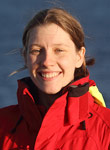
Rosanna Milligan, NOVA Southeastern University
Dr. Rosanna Milligan’s main research interests lie in understanding how natural and anthropogenic drivers influence changes in deep-sea fish communities at different spatial and temporal scales. Her work on demersal fishes is heavily reliant on data collected by autonomous vehicles, benthic observatories and via remote-sensing. She is currently working as a post-doctoral research scientist with Prof. Tracey Sutton to examine community and population dynamics in the pelagic ecosystems of the Gulf of Mexico as part of the DEEPEND project.
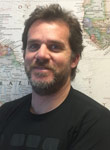
Enrique Montes, University of South Florida
Dr. Enrique Montes is a Research Associate in biological oceanography at the College of Marine Science, University of South Florida. While he was born in the U.K. he grew up in Venezuela. Montes came to the U.S.A in 2006 for his Ph.D. at the University of South Florida and the University of Massachusetts Dartmouth and completed his degree in 2011. Montes studies how oceanic carbon, nitrogen and oxygen cycles and ecosystems change in time and space as a result of natural and human pressures using time series of observations collected by traditional oceanographic methods and by satellite sensors. He also investigates processes that affect water quality, primary production, and biodiversity in coastal and open ocean environments and their impacts on ecosystems and therefore human well-being. Montes uses field-based time series to measure the vertical structure of plankton and how it relates to the settling flux of particles in the ocean. He combines sediment trap and bio-optical observations with several types of satellite data for scaling local processes to broader spatial and temporal domains.
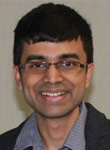
Adita Nayak,Cooperative Institute for Ocean Exploration, Research & Technology (CIOERT) at Harbor Branch Oceanographic Institute
Aditya Nayak is currently a Post-doctoral Research Associate at the FAU Harbor Branch Oceanographic Institute in Fort Pierce, Florida. Aditya completed his Master’s and Ph.D. degrees in Mechanical Engineering from the Johns Hopkins University in Baltimore, Maryland and his Bachelor’s degree from NITK Surathkal in India. Aditya's research interests lie in experimental fluid dynamics, specifically small-scale turbulence, biophysical interactions, coastal ocean boundary layer flow, and oceanic optical and acoustic instrumentation. His postdoctoral work involves using optical tools, specifically digital holography, to characterize marine particle dynamics and biophysical interactions in the water column of the coastal ocean, with implications to areas as diverse as remote sensing and plankton ecology.
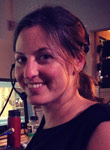
Amanda Netburn, Cooperative Institute of Ocean Exploration Research and Technology (FAU) and NOAA Ocean Exploration and Research
Dr. Amanda N. Netburn received a PhD in Oceanography and a Masters in Marine Conservation and Biodiversity from Scripps Institution of Oceanography. For her dissertation research, she studied the effects of deep hypoxic waters on the physiology and distributions of mesopelagic fishes off of southern California. In the past, Amanda has researched sustainable seafood at a NGO, taught SCUBA, captained small boats, and worked in aquaculture. She has sailed on a dozen oceanographic cruises. In the past year alone, Amanda sailed on the R/V Atlantis with Alvin and Sentry, the R/V Sally Ride with Jason, and had the unusual experience of leading midwater transects on the R/V Okeanos Explorer through telepresence while onboard another vessel, the E/V Nautilus. Amanda currently holds a joint position with CIOERT at Harbor Branch Oceanographic Institute and NOAA Ocean Exploration and Research, where she leads the effort to develop water column priorities and sampling protocols within the exploration context, work she began as a 2016 Knauss Fellow in Marine Policy at OER.
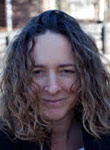
Karen Osborn, Smithsonian National Museum of Natural History
Karen is an invertebrate biologist interested in evolution of midwater animals. She has worked in the midwater since 1998 when she was introduced to the midwater as an MBARI summer intern. Since then, she has maintained close ties with researchers at MBARI throughout her graduate work at UC Berkeley, a postdoc at SIO and now as faculty at the Smithsonian National Museum of Natural History. She has a wealth of experience at sea visualizing and studying the midwater using MBARI’s remotely operated vehicles and on other ships using more traditional sampling and monitoring methods. Her use of state of the art genetic and imaging methods back on shore allow her to make detailed studies of the morphological, ecological and behavioral evolution of several groups of animals. Her work strives to provide a better understanding of the function of midwater communities and how animals have adapted to the particular challenges of life there.
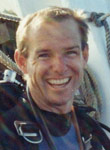
Frank Parrish, NOAA Pacific Islands Fisheries Science Center
Frank Parrish is Director of the Ecosystem Sciences Division, Pacific Islands Fisheries Science Center, NOAA Fisheries. His division studies and monitors coral reefs, conducts ecosystem modeling, analyzes satellite oceanography and does social science in support of the agencies fishery, protected species, and ecosystem mandates in the US Pacific Islands. As a research marine biologist his work focuses on studies of habitat ecology using a range of technology including manned submersibles, and animal borne cameras. He has published findings on reef fish, deepwater snappers, sharks, lobster, and the endangered Hawaiian monk seal. His most recent work has focused on understanding the ecosystem processes of deep corals that grow on the moderate and deep slopes of the islands. Frank has lived and worked in Hawaii since high school and obtained his doctorate from the University of Hawaii.

Brennan Phillips, Harvard University
Brennan Phillips received a BS in Ocean Engineering from the University of Rhode Island in 2004, an MS in Oceanography from the University of Connecticut in 2007, and a PhD in Oceanography from URI’s Graduate School of Oceanography in 2016. He is currently a Postdoctoral Fellow at Harvard University and the Wyss Institute for Biologically Inspired Engineering. Prior to starting his doctoral research, Brennan worked at the Woods Hole Oceanographic Institution and served as the ROV Operations Manager for the Ocean Exploration Trust. Brennan’s midwater research interests include hydrothermal plumes, bioluminescence imaging, and gelatinous zooplankton.
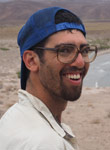
Elan Portner, Stanford University
Elan Portner is a Ph.D. candidate at Stanford University's Hopkins Marine Station. His research seeks to improve our understanding of pelagic trophic dynamics by elucidating seasonal and interannual variability in the distribution and composition of mesopelagic micronekton communities. Using diet analysis, scientific sonar, and remotely sensed environmental data, Elan is working to develop cost-effective tools to describe the relationship between variation in elusive mesopelagic communities and readily observable variability in oceanographic conditions. These tools will produce quantitative metrics of mesopelagic productivity that could be used to parameterize ecosystem models.
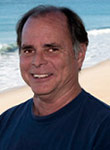
Kim Reisenbichler, Monterey Bay Aquarium Research Institute
Kim is a Research Specialist with the Midwater Ecology group and Diving Safety Officer at MBARI. He received his AA degree in Oceanographic Technology at Fullerton College prior to moving to the University of California, Santa Barbara to complete a BA in Aquatic Biology and MA in Aquatic and Population Biology. He was initiate into the world of midwater ecology while participating in midwater trawling operations with Bruce Robison in 1979 and then graduated to working with scientist-operated Atmospheric Diving Suits (ADS) and one-person submersibles, where he was responsible for developing and supporting the sampling tools deployed on those vehicles. He moved to MBARI in 1988 to continue his work developing midwater sampling methodology for the institute’s ROVs, as well as study the ecology and physiology of the animals in Monterey Bay. Kim has been the lead scientist and project manager on a number of engineering projects at MBARI including the development of: vehicle specific midwater toolsleds, an ROV-deployed in situ respirometer for measuring the oxygen consumption rates of a wide variety of midwater animals, and an AUV midwater video imaging module to economize and improve upon the long-standing survey work done by MBARI’s ROVs.
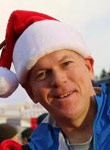
Joseph Resing, University of Washington and NOAA PMEL
Dr. Resing received his Ph.D from the University of Hawaii in 1997. While in Hawaii, he studied the impact of lava flowing into the sea from Kilauea volcano on the Big Island. He is interested in how the solid earth interacts with the ocean and how this impacts the distribution of elements in the ocean. In particular, he is interested in how submarine eruptions and hydrothermal circulation impact the biogeochemistry of the ocean. He has ~ 85 scientific publications on studies ranging from the chemistry of the oceanic water column, the chemistry of hydrothermal plumes, and the impact of recent eruptions on the ocean.
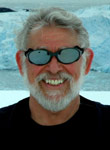
Bruce Robison, Monterey Bay Aquarium Research Institute
Bruce Robison earned a PhD from Stanford University and was a postdoc at the Woods Hole Oceanographic Institution. He then returned home to California, and UC Santa Barbara. In 1987 he joined the fledgling Monterey Bay Aquarium Research Institute. Robison's research is focused on the biology and ecology of the animals that inhabit the ocean’s deep water column. He pioneered the use of undersea vehicles for these studies and he led the first team of scientists trained as research submersible pilots. At MBARI, he has focused on the development of ROVs as platforms for deep-sea research. Robison is a Fellow of the AAAS and a Fellow of the California Academy of Sciences. He has received the Marine Technology Society's Lockheed-Martin Award for Ocean Science and Engineering, and the Ed Ricketts Memorial Award for Lifetime Achievement in Marine Science. In 2007 he was a Resident Scholar at the Rockefeller Foundation’s Bellagio Center, in Italy He is the author of more than a hundred scientific papers on a wide range of organisms from fishes, squids and jellies, to krill, dolphins and algae.
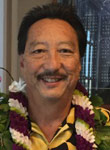
Michael Seki, NOAA Pacific Islands Fisheries Science Center
Dr. Michael Seki is the Science and Research Director of the NOAA’s Pacific Islands Fisheries Science Center and provides the science direction and oversight of research activities that support stewardship of living marine resources in the vast expanse of the Pacific Islands Region that includes the Hawaiian, Samoan, and Marianas Archipelagos and the Pacific Remote Islands Areas. Since joining NOAA Fisheries in 1980, Dr. Seki has conducted extensive fisheries, oceanographic, and ecosystem research on many marine species in the Pacific region. His research particularly focused on biological responses at oceanic fronts and eddies, the biogeography and trophic relationships of pelagic fishes and cephalopods, and open ocean food webs. He has authored or co-authored over 40 scientific papers and has participated on over 20 domestic and international research surveys, serving as the Chief Scientist on 14 of them. Prior to becoming Director, Dr. Seki also served as Deputy Director for the Pacific Islands Fisheries Science Center from 2003-2015 where he had the overarching responsibility and oversight of all Science Center operations. Born and raised in Hawaii, Dr. Seki received his B.S. in biology from the University of Oregon (Eugene), his M.S. in oceanography from the University of Hawaii (Manoa), and his Ph.D. in marine environment and resources from Hokkaido University (Graduate School of Fisheries Science in Hakodate, Hokkaido, Japan).

Uwe Send, Scripps Institution of Oceanography
Uwe Send is a physical oceanography professor at Scripps Institution of Oceanography. He specializes in deep-ocean and coastal time series observations to research climate relevant physical processes and their impact on the biogeochemistry and ecosystems. His team develops and operates wide range of integrated mooring systems around the world with remote data access and instrument control. He studied physics at Bochum University (Germany), astronomy at the University of Sussex (UK), oceanography at Southampton University (UK) and at Scripps Institution of Oceanography, and was professor and department chair at IfM Kiel (Germany) prior to moving to San Diego. He is co-chair of the global timeseries project OceanSITES, member of several international ocean observing panels. He holds the Frieman Chair for Global Ocean Observations at Scripps Institution.

Rob Sherlock, Monterey Bay Aquarium Research Institute
Rob Sherlock works as a Senior Research Technician in the Research and Development Division of the Monterey Bay Aquarium Research Institute, MBARI. Bruce Robison, Kim Reisenbichler and he form the core of the lab-group. They study the animals and properties of the ocean’s largest habitat, the midwater. When they first came to MBARI almost three decades ago, Bruce and Kim had the foresight to begin a mesopelagic time series. Rob’s been lucky to be a part of that project for the last 20 years and now manages it. From the time series they have learned a great deal about the ecology of midwater organisms, their abundance and seasonal patterns, depth ranges, and who eats whom. Personally, Rob is very interested in education as well as research. In his spare time he enough to teaches a bit at a local community college and looks forward to the open houses and public events hosted at MBARI. In the less-recent past, Rob has worked as the diving director and as an educator for the Catalina Island Marine Institute (CIMI).
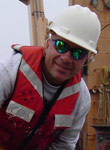
Tracey T. Sutton, Nova Southeastern University
Dr. Sutton is a marine ecologist whose research is largely focused on oceanic ecosystems, from the surface to bathypelagic depths (0-5000 m). His primarily specialization is the ecology, taxonomy and systematics of epi-, meso-, and bathypelagic fishes. He currently leads the DEEPEND (Deep Pelagic Nekton Dynamics) Consortium (www.deependconsortium.org), a project involving ~70 scientists at 15 institutions whose mission is to explore the dynamics of the deep Gulf of Mexico water column. Before DEEPEND Dr. Sutton was the lead PI of the NOAA-supported Offshore Nekton Sampling and Analysis Program, a project created to assist NOAA’s Deepwater Horizon Natural Resource Damage Assessment. He also co-led the Pelagic Nekton Group of the Census of Marine Life project MAR-ECO, where he received support from NOAA Ocean Exploration and NSF. Dr. Sutton is currently a Steering Committee member of the Deep-Ocean Stewardship Initiative, a co-PI in the Global Ocean Biodiversity Initiative, and an invited Expert Panel Member of the United Nations World Ocean Assessment.
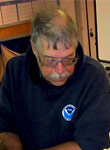
Michael Vecchione, NOAA/NMFS National Systematics Lab., National Museum of Natural History
Born in a town called Neptune, Michael Vecchione went to sea as a cabin boy on a three-masted schooner in Maine at the age of 16. He completed undergraduate studies in biology at the University of Miami in 1972, and then spent four and a half years as a U.S. Army officer. He has been working on the biology, evolution, and life history of cephalopods (squids, octopods, and their relatives) since his graduate studies on planktonic molluscs during 1976-79 at the Virginia Institute of Marine Science (VIMS), the School of Marine Science for the College of William and Mary. After receiving the Ph.D degree there, he worked briefly for the U.S. Fish and Wildlife Service before accepting a faculty position at McNeese State University where he studied cephalopods, zooplankton, and ichthyoplankton in addition to teaching from 1981-86. In 1986 he moved to his present position as Cephalopod Biologist at the National Systematics Laboratory (NSL), a NOAA Fisheries lab located at the National Museum of Natural History (NMNH) where he is an Adjunct Scientist of the Smithsonian Institution. He was Director of the NSL 1997-2015. Vecchione is Curator of Cephalopods and Pteropods at NMNH and a Curator of the Sant Ocean Hall. He also established and served from 2000-2002 as Director of a Cooperative Marine Education and Research program at VIMS, where he continues to teach graduate courses as an adjunct faculty member. He was deeply involved in the Census of Marine Life, including serving on the International Steering Committee of the MAR-ECO project. As a member of the Pool of Experts, he was co-author on four sections of the UN World Ocean Assessment. His research has taken him to both polar regions and in submersibles almost 3 miles deep. He has gone out on 39 offshore research expeditions, 13 of them as Chief Scientist, and many coastal sampling trips. He is currently participating in a field project entitled Deep Pelagic Nekton Dynamics of the Gulf of Mexico and also participates actively in NOAA's Ocean Exploration program. Vecchione is a Fellow of the American Association for the Advancement of Science and Past-President of the Cephalopod International Advisory Council.
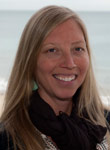
Susan Von Thun, Monterey Bay Aquarium Research Institute
Susan is a Senior Research Technician and Social Media Specialist working in the video lab at the Monterey Bay Aquarium Research Institute (MBARI). Over the 15 years she has been working at MBARI, she has become an expert in identifying midwater animals from MBARI's remotely operated vehicles (ROV) video. She use VARS (Video Annnotation Reference System) to describe the animals and habitat observed with ROV and (coming soon) AUV video. She has worked with engineers and scientists to make this rich data set as robust and usable as possible. The data is publicly available through the VARS public query and MBARI Deep-Sea Guide. She also manages MBARI's social media and is passionate about science communication, using YouTube, Facebook, Twitter, and Instagram to share MBARI's research with the public.
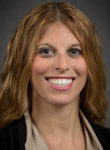
Carlie Wiener, Schmidt Ocean Institute
Carlie Wiener is the Communications Manager at Schmidt Ocean Institute and has over ten years of experience in marine science communications working on research, outreach, evaluation, and professional leadership. She received her bachelor’s degree magna cum laude in communications and her Master’s and Doctorate degree in environmental studies from York University in Toronto, Canada. Her research focused on integrating natural and social science methods while examining Hawaiian spinner dolphins and dolphin-swim tourism. Carlie previously held the position of communications manager for Centers for Ocean Science Education Excellence (COSEE) Island Earth, and prior to that worked as the research and outreach specialist for the Hawaii Institute of Marine Biology Northwestern Hawaiian Islands Research Partnership at the University of Hawaii. She also hosts the monthly marine science radio show, All Things Marine ![]() .
.
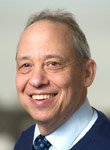
Dana Yoerger, Woods Hole Oceanographic Institute
Dr. Dana Yoerger is a Senior Scientist at the Woods Hole Oceanographic Institution and a researcher in robotics and unmanned vehicles. He supervises the research and academic program of graduate students studying oceanographic engineering through the MIT/WHOI Joint Program in the areas of control, robotics, and design. Dr. Yoerger has been a key contributor to the remotely-operated vehicle Jason; to the Autonomous Benthic Explorer known as ABE; most recently, to the autonomous underwater vehicle, Sentry; and the hybrid remotely operated vehicle, NEREUS, which reached the bottom of the Mariana Trench in 2009. Dr. Yoerger has gone to sea on over 80 oceanographic expeditions exploring the Mid-Ocean Ridge, mapping underwater seamounts and volcanoes, surveying ancient and modern shipwrecks, studying the environmental effects of the Deepwater Horizon oil spill, and the recent effort that located the Voyage Data Recorder from the merchant vessel El Faro. His current research focuses on robots for exploring the midwater regions of the world’s ocean. He was the 2009 recipient of the Lockheed Award for Ocean Science and Engineering and serves on the Research Board for BP’s Gulf of Mexico Research Initiative. He recently served as interim Director of WHOI’s Center for Marine Robotics and currently holds the Walter A. and Hope Noyes Smith Chair for Excellence in Oceanography.
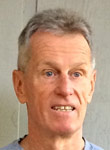
Marsh Youngbluth, Florida Atlantic University/Harbor Branch Oceanographic Institute
Marsh Youngbluth began his academic career at Portland State University (BS), conducted ethological studies of coral reef fishes at the University of Hawaii (MS) and completed ecological investigations of euphausiids at the Hopkins Marine Station, Stanford University (PhD) during the RV TeVega and RV Proteus era, under supervision of Professor Malvern (Red) Gilmartin. After a stint with the Atomic Energy Commission, when he surveyed coastal zooplankton around Puerto Rico, he joined the Harbor Branch Oceanographic Institution to pursue mesopelagic fauna, especially gelata, with the manned JSL submersibles. Collaborations with colleagues (MBARI, France, Norway, Sweden and Scotland) expanded his midwater experience with ROVs. He has served as a Program Director (NOAA/NURP and NSF/OCE) and as a member of DESSC/UNOLS. Currently, he participates with the DESCEND program and acts as an editor for Marine Ecology Progress Series.
Agenda
View the schedule of presentations and breakout sessions.
Event Information
View hotel and travel information.
Background Materials
View relevant papers and other materials.
